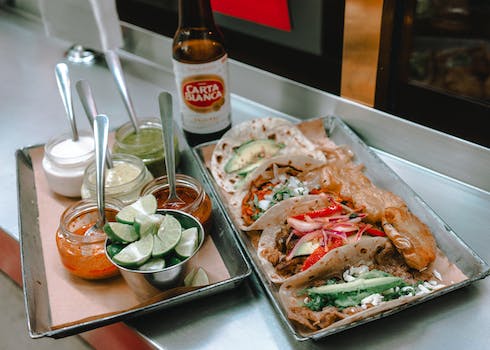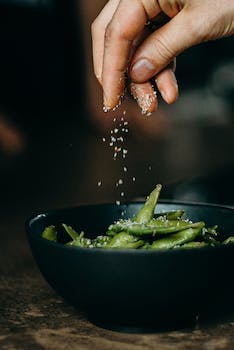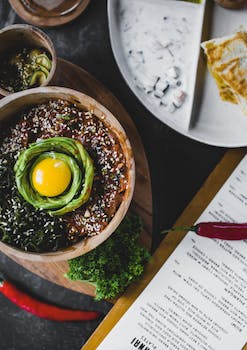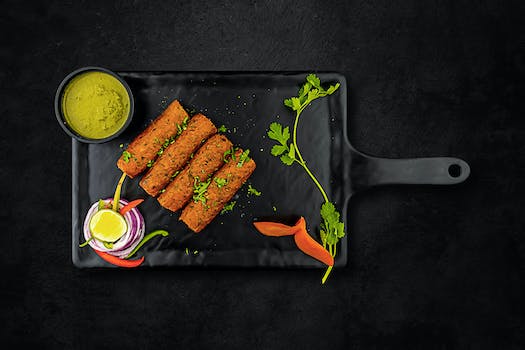

-
Table of Contents
Unravel the story of Gouda: Discover the King of Cheese.
Introduction
Gouda cheese is a popular and widely recognized cheese variety that originated in the Netherlands. With its distinct flavor and creamy texture, Gouda has become a staple in many households around the world. However, the story behind the creation and evolution of Gouda cheese is a fascinating one. In this article, we will delve into the history and production process of Gouda cheese, uncovering the secrets that make it the king of cheese.
The History and Origins of Gouda Cheese
Gouda cheese, with its rich and creamy texture, is a beloved favorite among cheese connoisseurs worldwide. But have you ever wondered about the history and origins of this delectable cheese? Join us on a journey as we unravel the story of Gouda, the king of cheese.
The history of Gouda cheese dates back centuries, with its origins rooted in the Netherlands. The city of Gouda, located in the province of South Holland, played a significant role in the development and popularization of this cheese. Gouda, a bustling market town, became a hub for cheese production and trade during the Middle Ages.
The production of Gouda cheese was initially a way for farmers to preserve surplus milk. They discovered that by curdling the milk and pressing it into molds, they could create a cheese that would last for extended periods. This method of cheese-making quickly gained popularity, and Gouda cheese became a staple in Dutch households.
The name "Gouda" itself is derived from the city where it originated. The cheese was traditionally made in the region surrounding Gouda, and it became synonymous with the city's name. Over time, Gouda cheese gained recognition and became a sought-after commodity, not just in the Netherlands but also in other parts of Europe.
During the 17th century, the Dutch East India Company played a crucial role in spreading the popularity of Gouda cheese beyond European borders. The company's ships carried Gouda cheese to various parts of the world, including the Dutch colonies in the East Indies (present-day Indonesia). This exposure to different cultures and cuisines led to the cheese's integration into international culinary traditions.
Gouda cheese continued to evolve and improve over the years. In the 19th century, advancements in cheese-making technology, such as the introduction of pasteurization and the use of stainless steel equipment, revolutionized the production process. These innovations ensured consistent quality and enhanced the cheese's flavor and texture.
Today, Gouda cheese is made not only in the Netherlands but also in other countries around the world. However, the traditional method of production, known as "farmhouse Gouda," remains highly regarded. This method involves using raw milk from cows grazing on lush pastures, resulting in a cheese with a distinct flavor profile.
The popularity of Gouda cheese has also led to the creation of various variations and flavors. From young Gouda, which is mild and creamy, to aged Gouda, which develops a nutty and caramel-like taste, there is a Gouda cheese to suit every palate. Smoked Gouda, with its smoky aroma and flavor, is another popular variation that adds a unique twist to dishes.
In conclusion, the history and origins of Gouda cheese are deeply intertwined with the city of Gouda and the Netherlands. From its humble beginnings as a way to preserve surplus milk, Gouda cheese has evolved into a globally recognized and cherished delicacy. Whether enjoyed on its own, melted in a sandwich, or incorporated into a recipe, Gouda cheese continues to captivate cheese lovers with its rich history and unparalleled taste.
Gouda Cheese: A Guide to Production and Aging Techniques

Gouda cheese, with its rich and creamy texture, is a beloved favorite among cheese connoisseurs around the world. But have you ever wondered about the story behind this delectable cheese? In this article, we will delve into the production and aging techniques that make Gouda cheese the king of cheese.
The production of Gouda cheese begins with the highest quality milk. Traditionally, this milk comes from cows grazing on lush Dutch pastures. The milk is carefully collected and transported to the cheese factory, where it undergoes a meticulous process of pasteurization. This step ensures the safety and quality of the cheese by eliminating harmful bacteria.
Once the milk is pasteurized, it is time to add the starter culture. This culture consists of carefully selected bacteria strains that contribute to the unique flavor and texture of Gouda cheese. The starter culture is added to the milk, and then rennet is introduced. Rennet is an enzyme that helps coagulate the milk, separating it into curds and whey.
The curds are then cut into small pieces to release the whey. This process is known as "cutting the curds." The size of the curds can vary depending on the desired texture of the final cheese. After cutting, the curds are gently stirred and heated to encourage further separation of the whey.
Once the whey is drained, the curds are transferred to molds. These molds give the cheese its characteristic shape and help to further expel any remaining whey. The cheese is then pressed to remove excess moisture and create a firm texture.
After pressing, the cheese is immersed in a brine solution. This brine bath adds flavor and helps to preserve the cheese. The length of time the cheese spends in the brine can vary, depending on the desired taste and texture. Some Gouda cheeses are aged for just a few weeks, while others are aged for several months or even years.
During the aging process, the cheese develops its distinct flavor and texture. The cheese wheels are carefully stored in temperature and humidity-controlled environments, allowing them to mature and develop their unique characteristics. The aging process can range from a few weeks to several years, with longer aging times resulting in a more intense and complex flavor.
As Gouda cheese ages, it develops a natural rind that adds to its appeal. This rind is formed by the growth of beneficial molds and bacteria on the surface of the cheese. These microorganisms contribute to the flavor and texture of the cheese, creating a truly exceptional product.
In conclusion, the production and aging techniques of Gouda cheese are what make it the king of cheese. From the careful selection of milk to the addition of starter cultures and the aging process, every step is crucial in creating the perfect Gouda cheese. So, the next time you savor a slice of this delectable cheese, take a moment to appreciate the craftsmanship and dedication that went into its creation.
Exploring the Versatility of Gouda Cheese in Culinary Delights
Gouda cheese, with its rich and creamy texture, is a versatile ingredient that can elevate any culinary creation. From appetizers to main courses, this Dutch cheese adds a depth of flavor that is hard to resist. In this section, we will explore the various ways in which Gouda cheese can be used in culinary delights.
One of the simplest yet most delicious ways to enjoy Gouda cheese is by pairing it with fruits and nuts. The creamy and slightly nutty flavor of Gouda complements the sweetness of fruits like apples and pears, while the crunch of nuts adds a delightful texture. This combination can be served as a light and refreshing appetizer or as a part of a cheese platter.
Moving on to main courses, Gouda cheese can be used in a variety of ways to enhance the flavors of different dishes. One popular option is to melt Gouda cheese over a juicy burger or a grilled chicken breast. The melted cheese adds a creamy and savory element that takes these dishes to a whole new level. Alternatively, Gouda can be grated and sprinkled over pasta dishes or casseroles, creating a gooey and cheesy topping that is simply irresistible.
For those who enjoy vegetarian options, Gouda cheese can be a star ingredient in dishes like stuffed peppers or roasted vegetables. The cheese melts beautifully, creating a creamy and flavorful filling that complements the natural sweetness of the vegetables. Additionally, Gouda can be used to make a delicious and hearty vegetarian lasagna, layered with vegetables and a rich tomato sauce.
Moving on to desserts, Gouda cheese can be used to create unique and indulgent treats. One popular option is to make a Gouda cheesecake, where the cheese is blended with cream cheese, sugar, and eggs to create a creamy and slightly tangy dessert. The addition of Gouda cheese adds a depth of flavor that sets this cheesecake apart from the traditional ones. Another option is to pair Gouda cheese with dark chocolate, creating a sweet and savory combination that is sure to satisfy any sweet tooth.
In addition to its versatility in various dishes, Gouda cheese also pairs well with a variety of beverages. Its creamy and slightly nutty flavor complements both red and white wines, making it a perfect addition to a wine and cheese tasting. Additionally, Gouda cheese pairs well with beers, particularly those with malty or hoppy flavors. The combination of the cheese's creaminess and the beer's carbonation creates a delightful contrast that enhances the overall tasting experience.
In conclusion, Gouda cheese is a versatile ingredient that can be used in a wide range of culinary delights. From appetizers to main courses and even desserts, this Dutch cheese adds a depth of flavor that is hard to resist. Whether melted, grated, or blended, Gouda cheese elevates any dish it is used in. So, the next time you're looking to add a touch of sophistication to your cooking, consider reaching for a block of Gouda cheese and let your culinary creativity soar.
Q&A
1. What is "Discovering the King of Cheese: Unraveling the Story of Gouda" about?
"Discovering the King of Cheese: Unraveling the Story of Gouda" is a book that explores the history and origins of Gouda cheese.
2. Who is the author of "Discovering the King of Cheese: Unraveling the Story of Gouda"?
The author of "Discovering the King of Cheese: Unraveling the Story of Gouda" is an expert in cheese history and is known for their extensive research on Gouda cheese.
3. What can readers expect to learn from "Discovering the King of Cheese: Unraveling the Story of Gouda"?
Readers can expect to learn about the origins, production methods, cultural significance, and various aspects of Gouda cheese through the detailed exploration provided in the book.
Conclusion
In conclusion, the process of discovering the King of Cheese, Gouda, involves unraveling its fascinating story. Through historical research, cheese-making techniques, and cultural significance, we can gain a deeper understanding of Gouda's origins and its journey to becoming a renowned cheese worldwide.












